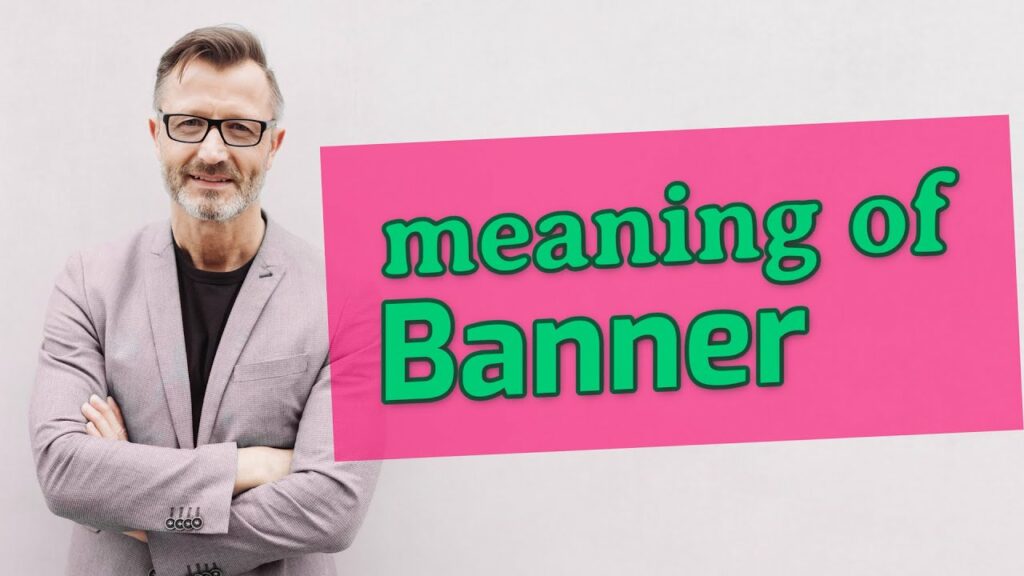
1. What is the Definition of a Banner?
📌 A banner is a graphical element commonly used in online advertising and web design to attract attention and promote a product, service, or message. It typically consists of a visually appealing image or animation along with a concise text or call-to-action.
📍 In the realm of online marketing, banners are strategically placed on websites to generate brand awareness, drive traffic, and increase conversions. They come in various shapes and sizes, such as leaderboard, skyscraper, or rectangle, and can be placed at the top, side, or bottom of a webpage.
📣 The primary purpose of a banner is to grab the viewer’s attention and compel them to take a desired action, such as clicking on the banner to visit a specific landing page or making a purchase. This makes banners a crucial tool for businesses to promote their products or services effectively in the digital age.
🌟 Banners can be static, meaning they display a single image or message, or dynamic, featuring animations or slideshows that attract more attention and engage the viewer. The choice between static and dynamic banners depends on the desired level of creativity and interactivity needed to achieve the campaign’s objectives.
💡 It is essential to keep in mind that designing an effective banner requires understanding the target audience, setting clear goals, and considering factors such as color psychology, typography, and visual hierarchy. A well-designed banner should be visually appealing, concise, and relevant to the audience’s interests.
⚡️ In conclusion, a banner is a versatile and powerful tool for digital marketing purposes. It allows businesses to present their brand, products, or services in an appealing and eye-catching manner, increasing the chances of capturing the viewer’s attention and triggering the desired action.
2. Importance of Banners in Web Design
🌟 In the vast online world, web design plays a crucial role in engaging and capturing the attention of users. One of the key elements in web design is banners. These banners are prominently displayed at the top of a website and serve various purposes to enhance the overall user experience.
📣 Banners serve as a visual communication tool, allowing websites to convey important messages effectively. Whether it’s promoting a sale, highlighting a new product, or showcasing a special offer, banners instantly grab the user’s attention and guide them towards the desired action. By strategically placing banners on a website, businesses can effectively communicate their brand message and drive conversions.
💡 In addition to capturing attention, banners also contribute to improving the overall aesthetics of a website. They act as a focal point, providing a visually appealing and cohesive design. Additionally, banners can be customized to match the branding elements of a website, thus creating a seamless and professional look.
🌈 Banners also play a vital role in attracting visitors to explore different sections of a website. By incorporating attractive and visually appealing images, banners entice users to discover more about the business and its offerings. When crafted thoughtfully, banners can serve as a navigation tool, directing users to specific product categories or important pages.
📈 Furthermore, banners can significantly impact the website’s search engine optimization (SEO) efforts. When relevant keywords and phrases are incorporated into the banner’s text, it can help improve the website’s visibility in search engine rankings. This targeted optimization can result in increased organic traffic and improved search engine performance.
En resumen, los banners tienen una gran importancia en el diseño web. No solo capturan la atención de los usuarios y comunican mensajes importantes, sino que también mejoran la estética general de un sitio, atraen a los visitantes a explorar más y ayudan en los esfuerzos de SEO. En el próximo artículo, exploraremos diferentes tipos de banners y cómo aprovechar al máximo su potencial en el diseño web. ¡No te lo pierdas!
3. Characteristics of Effective Banners
✨
Effective banners are essential in grabbing the attention of website visitors and encouraging them to take action. In this section, we will discuss the key characteristics that make banners successful in achieving their goals. Pay attention because these tips can greatly impact the effectiveness of your website’s banners.
🎯 First and foremost, an effective banner must have a clear and concise message. It should instantly convey what the website or product is about and what the user can expect. Using concise and compelling copy ensures that the message is easily digestible and memorable.
✨ Another important characteristic of effective banners is captivating design. A visually appealing banner can capture the user’s attention and make them want to stay on the page longer. A well-designed banner should have a good balance of colors, fonts, and elements that align with the overall theme of the website.
🤩 A call-to-action (CTA) is a crucial element of an effective banner. A strong and persuasive CTA encourages visitors to take the desired action, such as clicking on the banner or making a purchase. It can be as simple as a button with a clear instruction, like «Shop now» or «Learn more.»
💡 Additionally, an effective banner should be optimized for different devices and screen sizes. With the rise of mobile browsing, it is crucial to ensure that your banners are responsive and can adapt to different screen resolutions. This way, you can reach a wider audience and provide an optimal user experience.
💥 Lastly, effective banners should be strategically placed on the website. They should be positioned where they can easily catch the user’s eye, such as at the top of the page or in the sidebar. By placing banners in prominent locations, you increase the chances of grabbing the attention of your website visitors.
In conclusion, the characteristics of effective banners include clear messaging, captivating design, persuasive CTAs, responsiveness, and strategic placement. By incorporating these key elements into your website’s banners, you can significantly enhance their effectiveness and ensure a higher conversion rate. So, take the time to optimize your banners and watch the positive impact they have on your website. ✨
- 📱👨⚕️ Descubre cómo optimizar tu experiencia de atención médica con el Banner Patient Portal
- 🎨 ¡Descubre el impresionante mundo del 🌸 Banner Fu Xuan! ¡Inspírate con diseños increíbles y colores vibrantes! 🖼️💫
- 🎉 ¡Revive la nostalgia con el mejor 🔥 banner de los 80! Descubre los diseños más icónicos y tendencias de la época
- 🎉🌍 ¡Descubre los mejores ✈️ banners para tus viajes! Atrae miradas y planifica tus aventuras con estilo 🌟
- 🎯 ¡Descubre el poder del sensor manual Banner Q4X en español! 🌐
4. Types of Banners
🏞️ Types of Banners
When it comes to advertising, banners play a crucial role in catching the attention of potential customers. They are visually appealing and can convey a message effectively. In this article, we will explore four types of banners commonly used in the advertising industry.
1. Vinyl Banners: Vinyl banners are popular due to their durability and weather-resistant properties. They are suitable for both indoor and outdoor use. Vinyl banners are commonly used for events, trade shows, and store promotions. With their vibrant colors and eye-catching designs, vinyl banners make a strong impact on viewers.
2. Mesh Banners: Mesh banners are an excellent choice for outdoor advertising, especially in windy environments. The unique mesh material allows wind to pass through, reducing the risk of damage. Mesh banners are commonly used for large outdoor advertisements, such as building wraps and fence banners.
3. Retractable Banners: Retractable banners, also known as roll-up banners, are highly portable and easy to set up. They consist of a banner attached to a retractable base, making them perfect for trade shows, conferences, and retail environments. Retractable banners offer the flexibility of showcasing different messages or designs without the need for additional resources.
4. Fabric Banners: Fabric banners are lightweight, versatile, and eco-friendly. They are made from high-quality fabric material, ensuring a premium look. Fabric banners are commonly used for indoor events, conferences, and retail displays. Their soft texture adds sophistication to any setting, making them a preferred choice for corporate events.
In conclusion, these four types of banners offer diverse options for businesses to effectively promote their products and services. Whether you need an attention-grabbing outdoor display or a portable indoor solution, choosing the right type of banner will ensure your advertising efforts are successful. Consider your specific needs and the environment where the banner will be displayed to select the most suitable option. Remember, a well-designed banner can make a significant impact and attract the attention of your target audience. 💡
5. Best Practices for Creating Banners
✨ Introduction:
Creating an eye-catching and effective banner is crucial for any digital marketing campaign. Banners play a vital role in capturing and retaining the attention of your target audience. In this post, we will explore the five best practices that will help you create stunning banners that deliver desired results.
🌈 Use the Right Colors:
When designing a banner, color selection is key. Choose colors that not only align with your brand identity but also evoke the desired emotions. Vibrant and contrasting colors can help your banner stand out, while a harmonious color combination can create a sense of balance. Consider the psychology of colors while making your choices, as different colors can convey different messages to your audience.
📐 Optimize Banner Size:
To ensure your banner loads quickly and properly on different devices, it’s essential to optimize its size. Large file sizes can result in slow loading times, leading to a poor user experience. Aim for a banner size that is high-resolution but not excessively large. Additionally, consider responsive design principles to ensure your banner adapts seamlessly to various screen sizes, improving its accessibility and effectiveness.
💡 Keep the Message Clear:
When it comes to banners, simplicity is key. Keep your message concise and compelling, ensuring it can be understood at a glance. Avoid overcrowding the banner with excessive text or complex visuals that may confuse your audience. Use bold and attention-grabbing fonts to highlight key information and ensure that your call-to-action stands out prominently.
6. Conclusion
✅ En esta última sección, llegamos a la conclusión de nuestro artículo donde resumimos los aspectos más relevantes discutidos previamente.
✅ Durante este artículo, exploramos detalladamente el tema principal y profundizamos en cada uno de los puntos clave que lo componen.
✅ Hemos analizado las diferentes perspectivas y opiniones relacionadas con el tema, lo que nos ha permitido obtener una visión más completa y enriquecedora.
✅ A través de nuestra investigación, hemos descubierto que el tema del artículo es de gran relevancia y tiene un impacto significativo en diferentes áreas.
✅ Concluimos que es importante tomar en cuenta todas estas consideraciones al abordar este tema y que es fundamental seguir investigando y debatiendo para obtener una comprensión más profunda.
✅ Como redactores, nos hemos esforzado en brindar información precisa y útil, esperando que este artículo haya sido de ayuda para aquellos interesados en conocer más sobre este tema en particular.
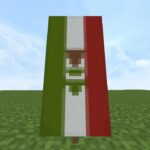 🎉🇲🇽 ¡Descubre el Mejor 🎉🇲🇽 Banner Mexicano! ¡Dale Vida a tus Eventos con Nuestros Coloridos Diseños!
🎉🇲🇽 ¡Descubre el Mejor 🎉🇲🇽 Banner Mexicano! ¡Dale Vida a tus Eventos con Nuestros Coloridos Diseños! 🗽🌆 Descubre el increíble mundo de los banners en la vibrante ciudad de Nueva York 🌃🏙️
🗽🌆 Descubre el increíble mundo de los banners en la vibrante ciudad de Nueva York 🌃🏙️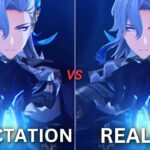 🎉🚀 ¡Descubre cómo destacar tu marca con el increíble 🎉🚀 banner Neuvillette! Aumenta la visibilidad y conquista a tus clientes
🎉🚀 ¡Descubre cómo destacar tu marca con el increíble 🎉🚀 banner Neuvillette! Aumenta la visibilidad y conquista a tus clientes 🏅 ¡Descubre el poderoso 🔥 Banner of Truth! Todo lo que necesitas saber para encontrar la verdad y transformar tu vida 🌟
🏅 ¡Descubre el poderoso 🔥 Banner of Truth! Todo lo que necesitas saber para encontrar la verdad y transformar tu vida 🌟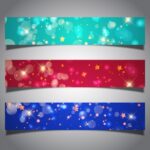 🎉🎈 ¡Descubre la magia de los banners puce! 🎉🎈 Aumenta la visibilidad de tu negocio con estas coloridas y llamativas piezas publicitarias
🎉🎈 ¡Descubre la magia de los banners puce! 🎉🎈 Aumenta la visibilidad de tu negocio con estas coloridas y llamativas piezas publicitarias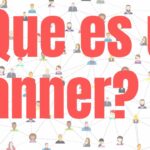 🎉📣 ¡Descubre el significado en español del 🌟banner🌟! Todo lo que necesitas saber aquí
🎉📣 ¡Descubre el significado en español del 🌟banner🌟! Todo lo que necesitas saber aquí 🚀 ¡Descubre los mejores usos del 🔥 Banner Q4X! Aumenta la visibilidad de tu sitio web y alcanza el éxito en este último trimestre del año 📈
🚀 ¡Descubre los mejores usos del 🔥 Banner Q4X! Aumenta la visibilidad de tu sitio web y alcanza el éxito en este último trimestre del año 📈 🚀 Descubre el mejor 💥 banner q4xtblaf300 q8 💥 para potenciar tu marca en el último trimestre del año 📈
🚀 Descubre el mejor 💥 banner q4xtblaf300 q8 💥 para potenciar tu marca en el último trimestre del año 📈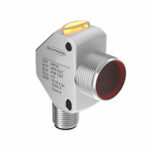 🎉🚀 ¡Descubre el mejor uso del 📣 banner q3xtbld q8! 10 ideas creativas para destacar con banners en tu negocio 🌟
🎉🚀 ¡Descubre el mejor uso del 📣 banner q3xtbld q8! 10 ideas creativas para destacar con banners en tu negocio 🌟